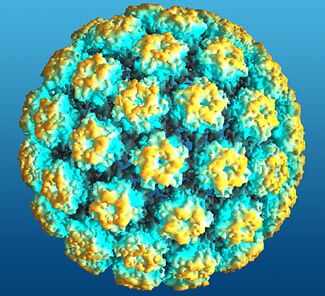Papilloma virus what is it?
Infection with the human papillomavirus (HPV - human papillomavirus papillomavirus) occurs more often than we can imagine. The disease is asymptomatic, which contributes to its wide spread, since most patients do not know about their infection.
There are about 100 types of papilloma virus. Some of them are responsible for benign lesions, such as warts, others can lead to pre-invasive lesions (dysplasia) and invasive, that is, cervical cancer.
In most cases, HPV infection starts completely asymptomatic.
Our body can itself eradicate the virus before it causes serious damage.
However, it also happens that the immune system cannot defeat HPV. In approximately 10% of women affected by the virus, the infection can become chronic. Cervical cancer was the first cancer recognized by the World Health Organization due to HPV infection (95%).
The papilloma virus in men is rare, passes almost asymptomatically and has no serious consequences. Only certain strains can cause cancer.
Symptoms of the human papillomavirus
There are some signs and symptoms that may make us think about a possible HPV infection. The most common are:
- unusual bleeding or vaginal discharge (especially after intercourse);
- pain in the lower back;
- pain during urination (especially in combination with pain in the lower abdomen);
- pain during intercourse.
.
Papillomavirus can cause other clinical manifestations, such as warts, which, in addition to the cervix, vagina, vulva, urethra, perineum and anus, can affect the conjunctiva of the eye, nose, oral cavity, and larynx. Sometimes lumps on the larynx are formed, which block breathing (in children infected from the mother during childbirth).
The clinical diagnosis is based on the observation of lesions visible to the naked eye, as well as on the results of colposcopy.
Treatment of human papillomavirus
Today, there is no medicine for the treatment of HPV infection. Fortunately, in most cases, the infection passes spontaneously or is eliminated from the body before it causes problems.
But if the infection persists, the available treatment only affects the pathological cells that form as a result of this
Laser treatment is usually used to treat genital warts. The precancerous cells of the uterine neck can also be removed by laser therapy or surgery, depending on the degree of damage.
Papilloma virus vaccination
Trump in the fight against cervical cancer is its prevention.Vaccination is carried out against HPV infection, which is now available to everyone. It exerts its protective effect against the genotypes of the virus responsible for most cases of cervical cancer (types 16 and 18) and genital warts (types 6 and 11). The vaccination is safe, well tolerated and able to prevent in almost all cases the onset of a chronic infection of two strains of the virus that are currently responsible for 70% of cervical cancer cases..
















